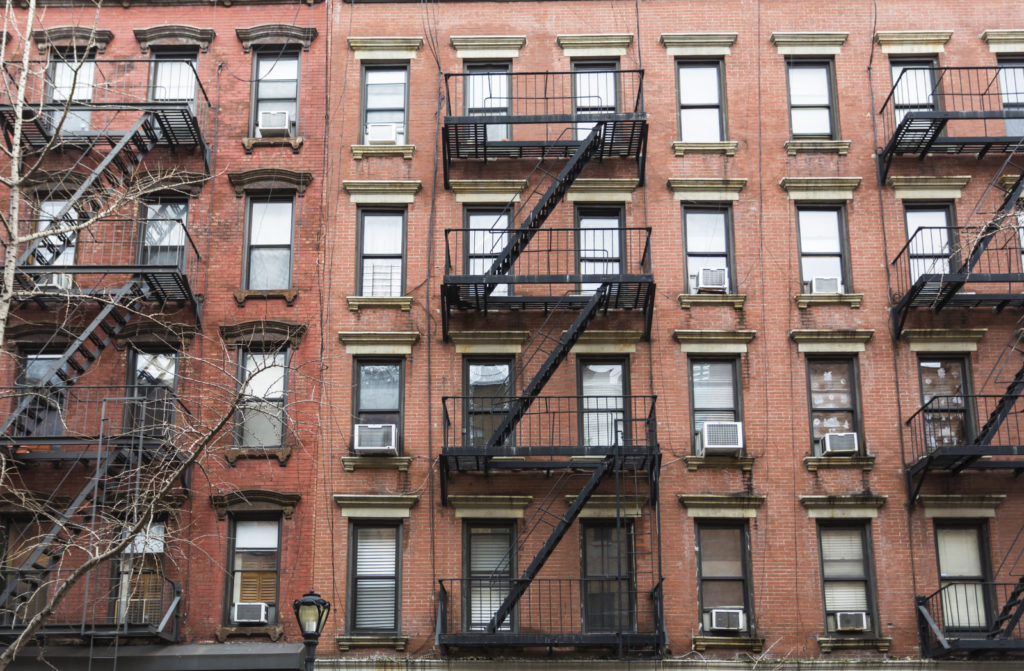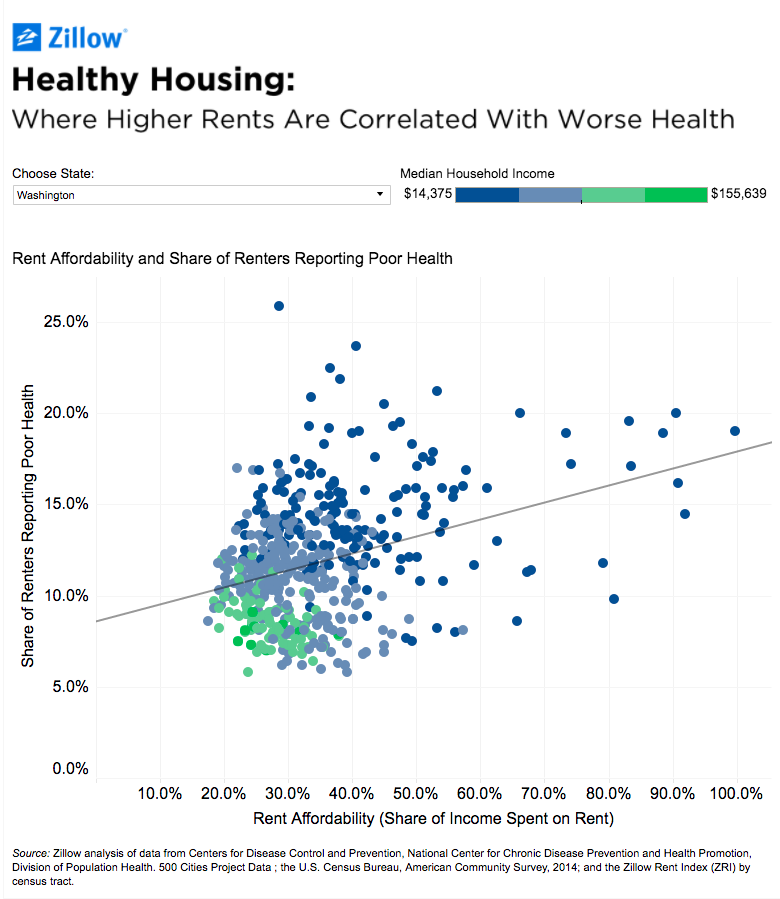Healthy Housing: Where Higher Rents Are Correlated With Worse Health
There is a strong correlation nationwide between communities with higher median rents and a larger proportion of local residents in poor health – even when incomes in those communities are similar.
- In Census tracts where residents spend a higher share of their income on rent, more people report being in poor physical health.
- Higher household incomes play a large role in both rent affordability and health. But even in communities with similar household incomes, higher rents correlate with worse health.
There is a strong correlation nationwide between communities with higher median rents and a larger proportion of local residents in poor health – even when incomes in those communities are similar.
When you pay more for rent – and when income growth doesn’t keep pace with growth in rental housing costs – it follows that there is generally less money left over to spend on other things, including healthcare and healthy habits. Zillow examined the link between rent burden and health at a Census tract-level by combining Zillow rent affordability data[1] with health quality data[2] from the Centers for Disease Control and Prevention.
The data show a clear national relationship between the percent of income spent on rent and health quality[3] – a connection that obviously has a lot to do with household incomes. Residents devoting a smaller share of their income towards rent tend to have higher incomes, and better incomes tend coincide with better health – a deeply established connection supported by our data.
But housing costs play a role as well, independent of incomes. When examining only census tracts across the country in which residents earn similar household incomes, those with higher median rental costs significantly[4] correlate with a higher proportion of residents in poor physical health (figure 1).
“The nexus is great between healthcare and housing,” Secretary Ben Carson said during his confirmation hearing for Secretary of Housing and Urban Development, and senators from both parties have expressed an eagerness and a commitment to tackling issues at that intersection. The link between rent costs and health, however, demonstrates that healthy rental housing isn’t only a problem of rapidly deteriorating old buildings. Rent burdens and affordability should also be thought of as a public health concern.
[1] We measure rent affordability as the percent of income spent on rent for the typical household by census tract, according to the Zillow Rent Index (ZRI).
[2] Centers for Disease Control and Prevention, National Center for Chronic Disease Prevention and Health Promotion, Division of Population Health. 500 Cities Project Data [online]. 2016 [accessed Mar 07, 2017]. URL: https://www.cdc.gov/500cities.
[3] Poor health refers to self-reported survey data on “physical health not good for greater than 14 days among adults 18 and older” from the 500 Cities Project, 2014.
[4] Significant at a .001 level.

